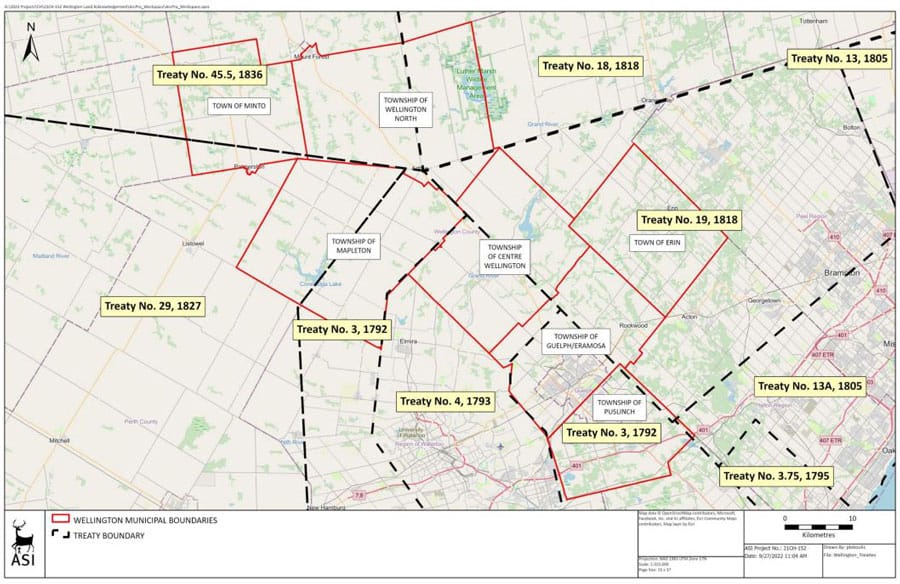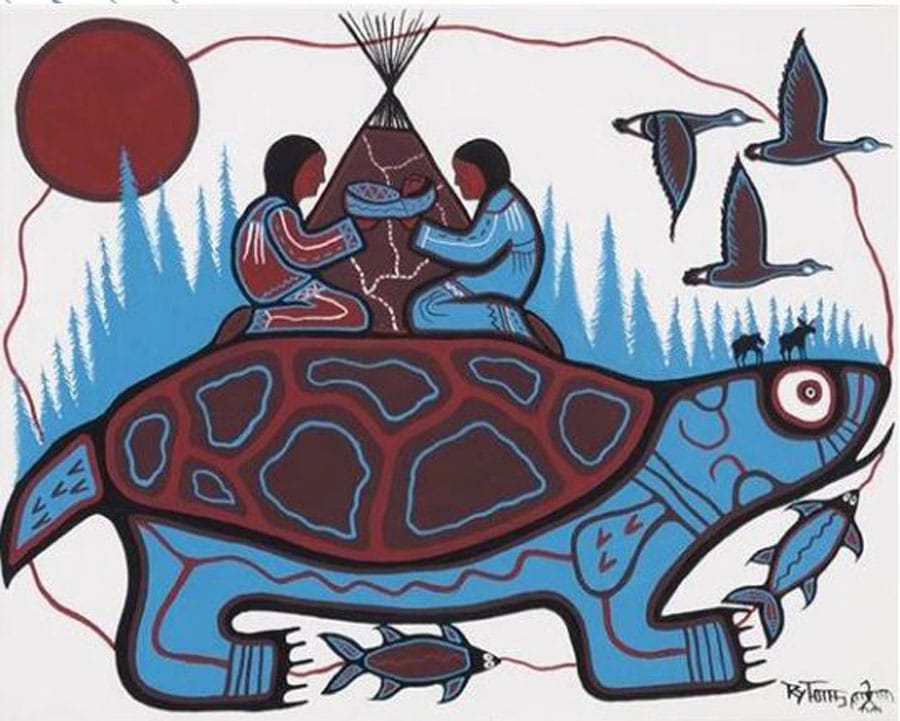FERGUS – Indigenous people have used traditional land acknowledgements when visiting places they do not originate from since time immemorial.
Land acknowledgements show respect, honour and appreciation for the land and for the traditional stewards of a particular place.
In recent years, land acknowledgments have become commonplace for governments, organizations and individuals wanting to take a step towards reconciliation.
The county retained ASI Heritage in 2021 to review and/or develop land acknowledgements for six of the seven municipalities within the county: Centre Wellington, Guelph/Eramosa, Mapleton, Minto, Puslinch, and Wellington North.
ASI Heritage senior cultural heritage specialist and manager Annie Veilleux presented the Wellington County Municipalities Land Acknowledgement Project during the Centre Wellington council meeting on July 31.
Veilleux said it’s important that land acknowledgements come from a sincere and thoughtful place and go beyond just paying lip service.
The ASI Heritage presentation outlined three requirements for land acknowledgements:
- identify appropriate Indigenous nations with historical accuracy;
- acknowledge past and present wrongs committed against Indigenous people; and
- be part of a larger effort towards reconciliation.
“Land acknowledgements must contribute to a feeling of inclusivity and should not be the source of further alienation. They should not exacerbate any potential tensions that might exist between existing nations,” the report continues.
Anishnaabe author Lun Gehl is quoted in the report, adding land acknowledgments “should not be an attempt to appease non-Indigenous guilt.”
ASI Heritage consulted 15 Indigenous Nations during the Wellington County Municipalities Land Acknowledgement Project:
- Aamjiwnaang First Nation;
- Chippewas of Nawash;
- Saugeen Indian Ojibway Nation;
- Chippewas of Kettle and Stony Point First Nation;
- Beausoleil First Nation;
- Chippewas of Georgina Island;
- Chippewas of Rama First Nation;
- Mississaugas of the Credit First Nation;
- Métis Nation of Ontario, and
- Six Nations of the Grand River and the Haudenosaunee Confederacy (Mohawk, Oneida, Onondaga, Cayuga, Seneca and Tuscarora Nations).

Centre Wellington has approved a new land acknowledgement to show honour, respect and appreciation for Anishinaabe and Haudenosaunee Peoples. Map from July 31 ASI Heritage presentation during to Centre Wellington council
ASI Heritage also gathered information from opinion pieces from Indigenous and non-Indigenous people and other land acknowledgements to inform the Wellington County Municipalities Land Acknowledgment Project.
The updated land acknowledgement for Centre Wellington is as follows:
“The lands we know today as the Township of Centre Wellington have been home to Indigenous peoples since time immemorial. We acknowledge that we are on the treaty lands and traditional territory of the Anishinaabe and the Haudenosaunee.
“With increasing encroachment by non-Indigenous settlers in the Township of Centre Wellington, the Anishinaabe and Haudenosaunee could not continue their traditional lifestyle and settled in their villages along the Credit River and in the Grand River Valley.
These Indigenous nations uphold their Treaty Rights within our jurisdiction.
“Today, the township … remains home to Indigenous peoples from across Turtle Island. We are grateful to have the opportunity to share and respect Mother Earth and are committed to building constructive and cooperative relationships with Indigenous nations.”
Centre Wellington council approved the updated land acknowledgement during its July 31 meeting.
Veilleux said the land acknowledgement is a living document that should be reviewed and updated as needed.




